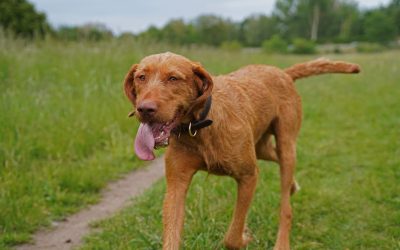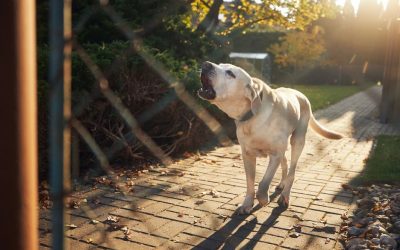Are Pit Bulls Dangerous? The Truth About Pitbulls

The pit bull has to be one of the most, if not the most, controversial dog breeds there are. But are pit bulls dangerous? Putting aside feelings and politics, let’s look at the history of this misunderstood animal.
To clarify, the term “pit bull” isn’t actually the name of one breed, but covers a group of breeds with similar characteristics. Since mixed breeds with a certain “look” can be considered pits there is some leeway as to what constitutes a pit bull, but there are specific breeds that fall into the “pit” category. In North America, the American Pit Bull Terrier, American Staffordshire Terrier, and the Staffordshire Bull Terrier are these formal breeds — though the American Bulldog and Bull Terrier are sometimes included.
The History of Pitbulls
Dating as far back as the 1500’s we find bulldogs in paintings. A famous one from 1817, entitled Crib and Rosa, shows the Old English Bulldog breed from which the pit bull was bred.
The pit bull’s origin traces back to Ireland where bulldogs and terriers were bred for the combination of agility and strength. Later, the dogs were used in the United Kingdom for blood sports such as bull-baiting, bear-baiting, and cock fighting. As America was settled by Europeans, pit bulls were eventually used as catch-dogs for wild animals and driving cattle.
What Were Pit Bulls Bred For?
Today, blood sports have been outlawed, but “underground” fighting rings still exist. Unfortunately, this often leads pits to still be thought of as fighting dogs. Despite the pit bull’s current reputation for violence, the bulldog it is bred from was typically a guard and companion dog.
Types of Pit Bull Breeds
There is now a distinction between the two main groups of pits: the red nose and the blue nose. Just as they sound, each group really does have a different colored nose. However, there are more differences.
Blue Nose Pit Bull
The coat color of the blue noses tends to be in the gray ranges and smooth, whereas the red noses are the brown and red coats. Being thought of as the original pit and more “true” to the original breed, the blue nose tends to fetch a higher price. Unfortunately, blue noses have experienced varying levels of inbreeding to achieve their lovely coat, and as a result can suffer from a wider range of health conditions, such as hypothyroidism and skin allergies.
Red Nose Pit Bull
The red nose tends to have the look of a pit but be diluted with the American breeds that came later. They are also potentially more susceptible to cerebellar abiotrophy and hip dysplasia than their blue-nosed companions. Red Nose Pit Bulls can also be expensive because they are the second-rarest pit bull breed after the Merle Pit Bull.
Are Pit Bulls Dangerous?
The question of whether pit bulls are inherently dangerous dogs has been debated extensively. Experts argue that with proper training and socialization, pit bulls can be very friendly, loyal, and safe family pets. They contend that dog aggression toward humans is not breed-specific and that irresponsible ownership and breeding practices are often to blame for pit bulls developing aggressive tendencies.
Like with any dog breed, responsible ownership and breeding are key to ensuring pit bulls become good canine citizens.
Are Pit Bulls The Right Breed for You?
Nowadays, pit bull breeds are more welcome in society and are even playing key roles in it. These include working dogs such as soldiers and police dogs, search and rescue dogs and guide dogs. For many, they still carry the stigma mentioned above, but despite this, the pit bull has become the beloved dog of many homes.
Sure, pit bulls can look intimidating with their strong jaws and muscular bodies. But remember, it’s not always wise to judge a book by its cover. With proper training and socialization from responsible owners, pits can be total softies. As like with any breed, though, you gotta put in the work to bring out their sweet side. Don’t go adopting a pittie if you’re not prepared to take the time to train ’em right. At Good Life Inc., we want everyone – both humans and canines – to stay safe and happy. So talk to your local rescue about meeting some pittie pups, but only take one home if you’re ready to be a committed, patient owner. That’s the real key to turning any “dangerous” dog into a delightful family pet. Now go give your pooch some belly rubs and treats.
For more information on dog breeds and humane training tools, visit the Ultimate Bark Control Blog.






